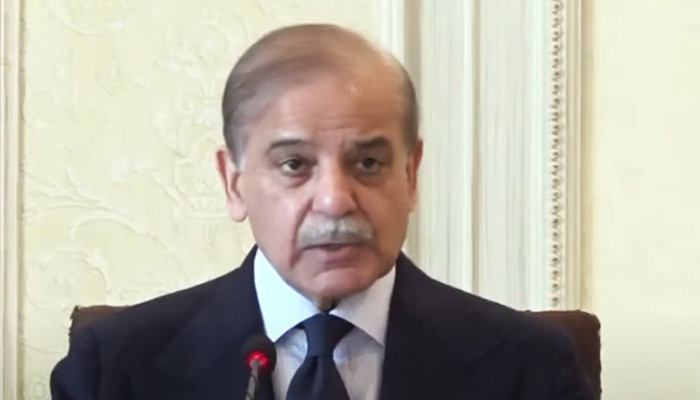US
An energy strategy conundrum
字号+ Author:Smart News Source:Sports 2025-01-11 00:30:25 I want to comment(0)
is a pertinent example of a systemic issue that extends beyond mere implementation challenges. This sector grapples with persistent policy inconsistencies and ambiguities, an obsolete governance model influenced by vested interests, and unprofessional management. There is a notable lack of coordination along energy supply chains and among various energy subsectors — a failure to develop an integrated energy plan. In Pakistan, the energy sector is not driven by market forces but by government decisions. Policymakers believe they know everything. They seek policy guidance only from donors or foreign consultants. Their assertions, or perhaps misconceptions, elude the intellectual rigour necessary to comprehend the intricate nature of this longstanding and profound chaos, which poses real and substantial threats to the sector’s and country’s development. One recent example is shutting gas to captive power plants under a commitment with the International Monetary Fund. Aside from the enormous investments made by the industry over the years in captive power plants, these plants are a source of reliable supplies for the industry and keep the industry globally competitive. The industry depends on these plants for 60 per cent to 80pc of its energy demand. These captive power plants sometimes meet 100pc of the electricity demand. Industrial grid defection is on the rise with the increase in solar captive plants. With the shutting of gas for captive power plants, there is less likelihood that large industries will switch to the grid. Rather, the industry will shift to alternate energy sources or move towards deindustrialisation, leading to massive unemployment. Though a competitive trading model has been developed, its implementation remains stalled by policy inconsistencies Over the years, rather than prioritising the maintenance and efficient utilisation of existing capacity, the emphasis has remained on new projects, resulting in costly excess capacity. Inadequate investments in downstream transmission and distribution infrastructure have significantly worsened these issues. Damaged networks, theft, little to zero modernisation, and insufficient energy accounting result in over 25pc electricity losses. Poorly conceived projects like the ‘Super Six’ wind power plants, approved in 2019 under the influence of the International Finance Corporation, have strained the energy sector financially. Despite excess capacity and inadequate infrastructure for evacuating electricity from the wind corridor, these plants were allowed. Consequently, these wind projects and other plants in the wind corridor in Sindh qualify for the Net Project Missed Volume, adding to the financial burden on consumers. Furthermore, though a Competitive Trading Bilateral Contract Market (CTBCM) model has been developed, its implementation hinges on establishing a justifiable wheeling cost. Introducing the CTBCM offers a promising future for the sector. However, when the wheeling charge tries to cover stranded costs or cross-subsidies, it will not be acceptable or viable for market participants. Decision-makers must recognise that the industry is moving away from the grid due to uncompetitive tariffs, even without power wheeling. This shift places an additional burden of capacity payments on the remaining consumers. Furthermore, as industrial consumers exit the grid, utilities lose revenue, ie transmission and distribution (T&D) margins previously collected from these customers. Even if stranded costs are not allowed, utilities can recover this revenue by allowing power wheeling. In the tariff determination for FY25, 49pc of capacity payments go to government-owned plants. Instead of renegotiating contracts with independent power projects (IPPs), the focus should be on these government plants to bring them for trading in the market. The emphasis on IPPs from 1995 and 2002 is unlikely to affect capacity payments significantly and may harm future investment in the country. It was written earlier that these IPPs agreed during power purchasing agreement renegotiations in 2020-21 that once CTBCM is implemented, they will transition towards the market from the take-or-pay clause. Implementing CTBCM and bringing these plants to the market will reduce the burden of capacity payments. For a long time, the pricing of energy, encompassing both gas and electricity, has been shaped significantly by sociopolitical objectives rather than grounded in economic fundamentals. Cross-subsidy has resulted in the redirection of resources from productive sectors like industry and commercial to non-productive sectors, such as the residential sector. Furthermore, the argument that allowing power wheeling would harm the subsidised domestic sector may only be valid in the short term. A wheeling is just the initial step. Establishing a market trading platform and competition in the retail market would ultimately benefit all consumers. Recently, a new (conditional) winter tariff package to boost grid electricity consumption is expected to have little impact in the three months. Likewise, decreasing buying rates from net-metering consumers will not bring back defected consumers (industry, residential, or any other). The only viable option left is to develop a competitive energy market where all consumers pay according to the service costs.
1.This site adheres to industry standards, and any reposted articles will clearly indicate the author and source;
 Related Articles
Related Articles-
وزیراعظم شہباز شریف نے اقتصادی ترقی کے لیے برآمدات پر مبنی ترقی اور سیاسی استحکام پر زور دیا۔
2025-01-11 00:12
-
Second Test: Rickelton, Bavuma stabilise South Africa at 316/4 on day 1
2025-01-10 23:57
-
Second Test: Rickelton, Bavuma stabilise South Africa at 316/4 on day 1
2025-01-10 22:58
-
Ravi Shastri anticipates Rohit Sharma’s Test cricket exit
2025-01-10 21:51
 User Reviews
User Reviews Recommended Reads
Recommended Reads Hot Information
Hot Information- پاکستان اور بھارت نے جوہری تنصیبات اور قیدیوں کی فہرستیں آپس میں تبادلہ کیں۔
- Second Test: Rickelton, Bavuma stabilise South Africa at 316/4 on day 1
- Ravi Shastri anticipates Rohit Sharma’s Test cricket exit
- Saim Ayub suffers ankle injury during second South Africa Test
- کم آمدن والے ملازمین کے لیے حج لیبر کوٹہ کے تحت نامزدگی کی درخواستیں مطلوب ہیں۔
- Rickelton’s double ton powers South Africa to 429-5 against Pakistan
- Second Test: Rickelton, Bavuma stabilise South Africa at 316/4 on day 1
- Saim Ayub suffers ankle injury during second South Africa Test
- 10 سال اور اس سے زیادہ عمر کے بچوں کے لیے B فارم کے لیے فنگر پرنٹ اور تصویر لازمی کر دی گئی ہے۔
 Abont US
Abont US
Follow our WhatasApp account to stay updated with the latest exciting content













